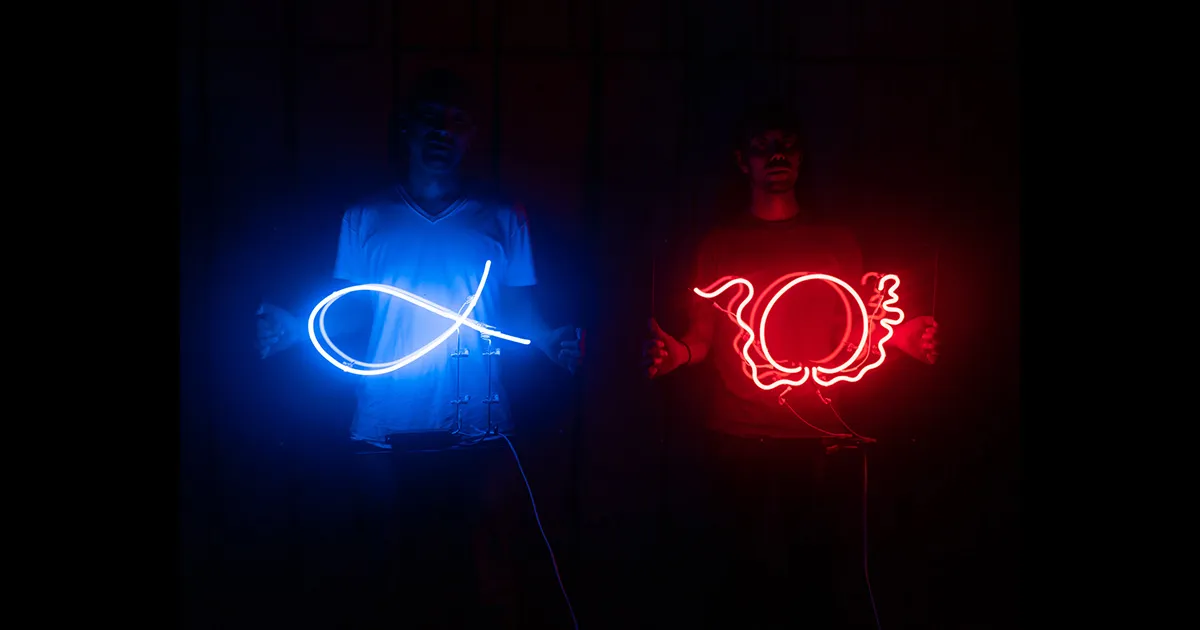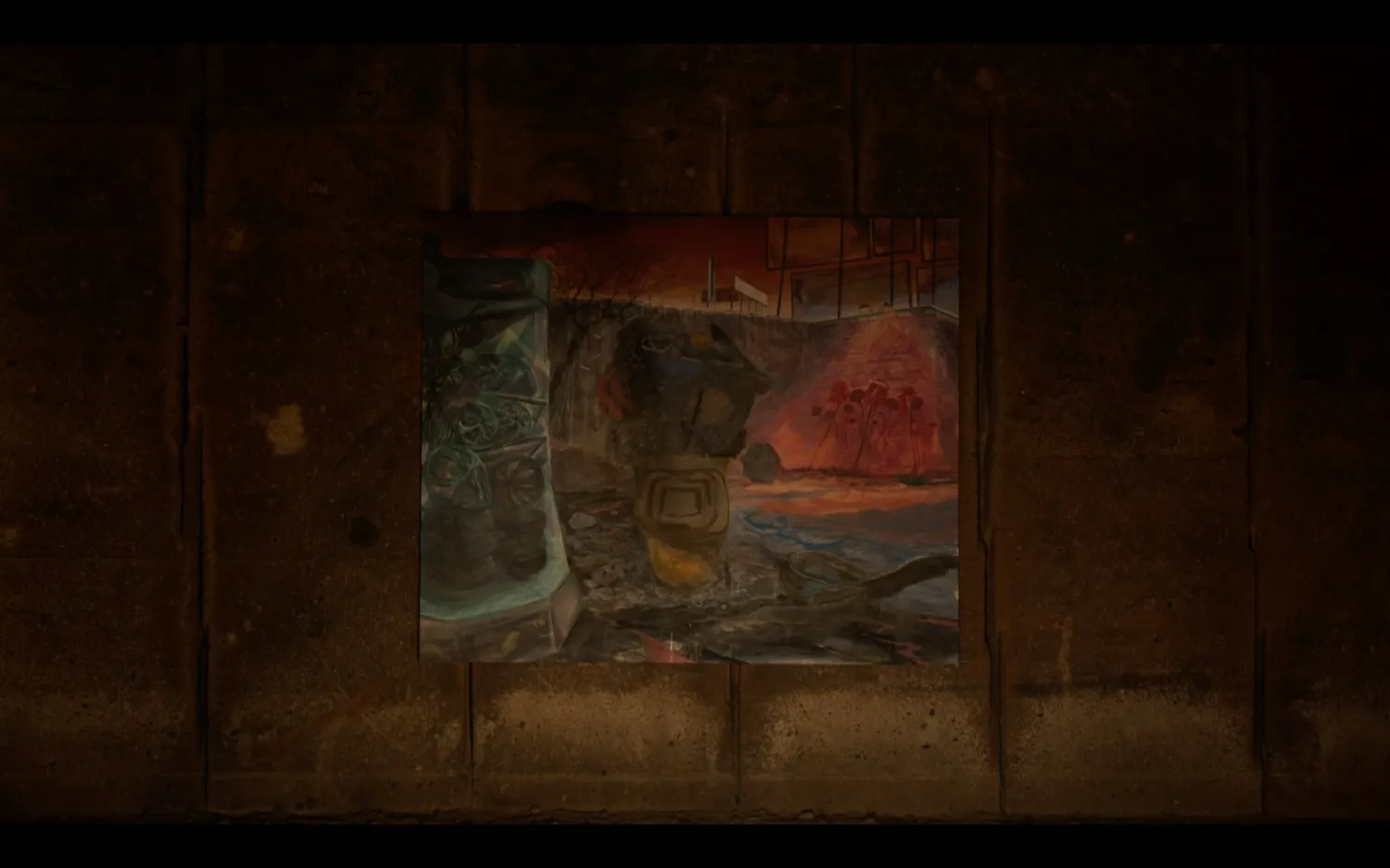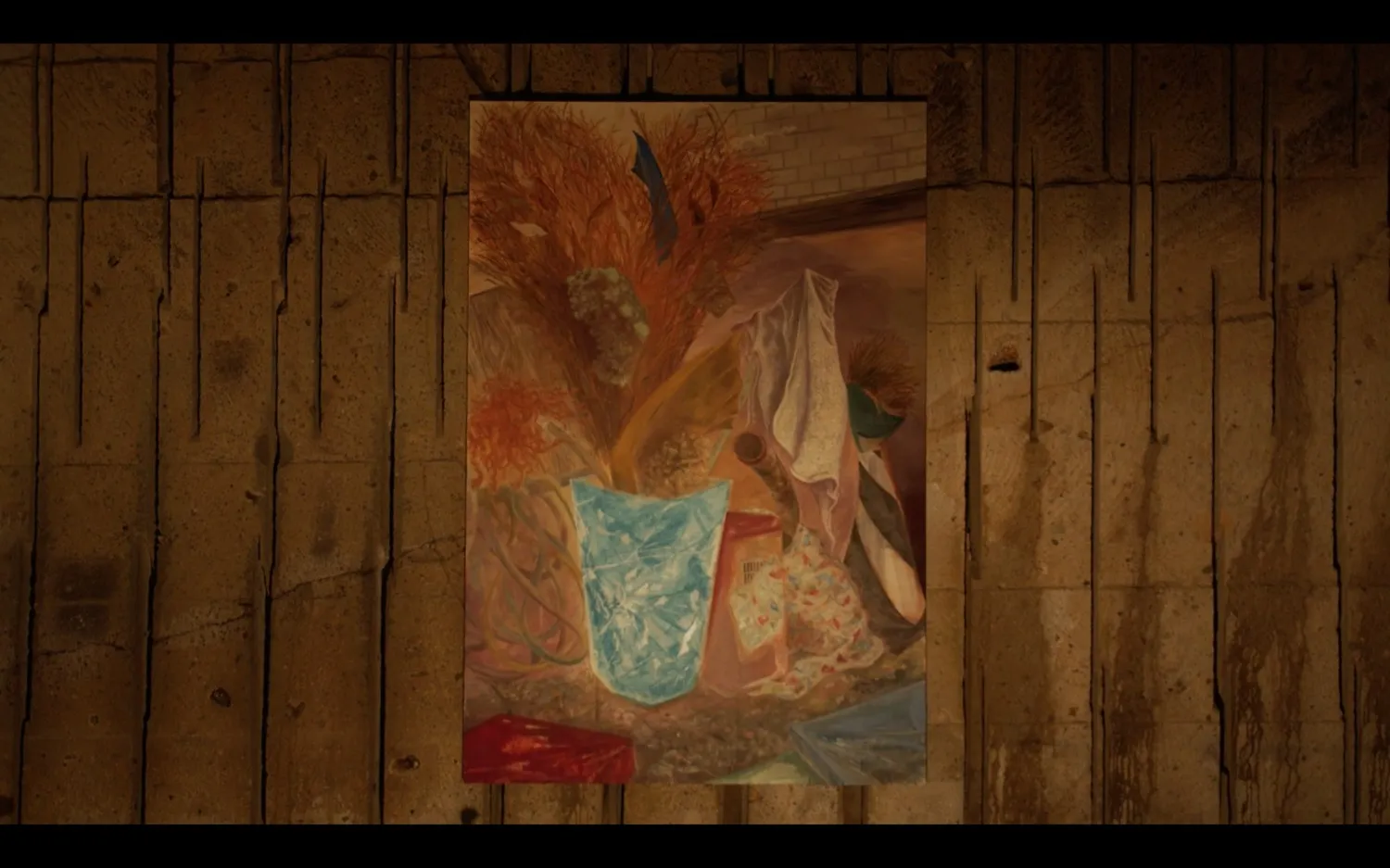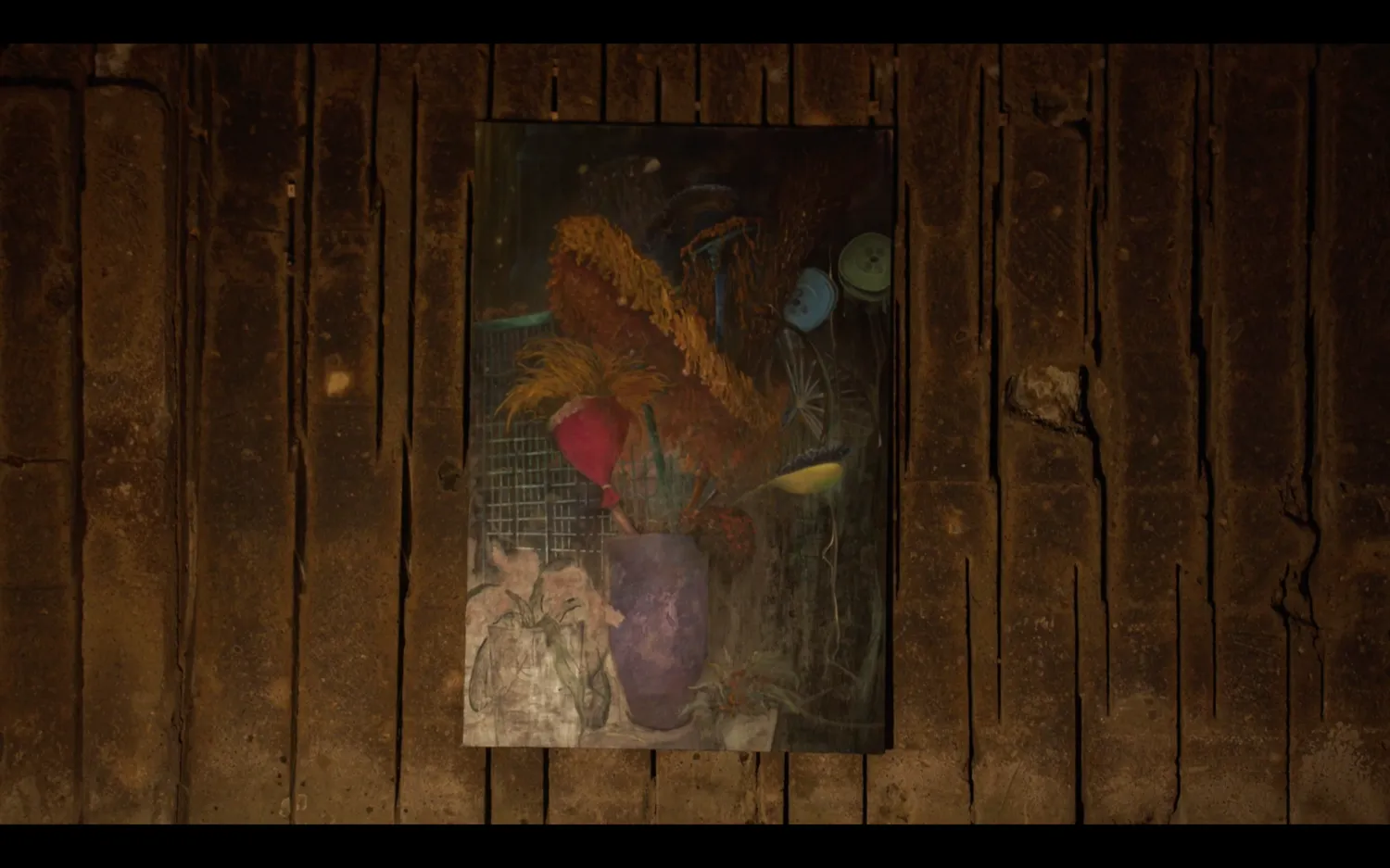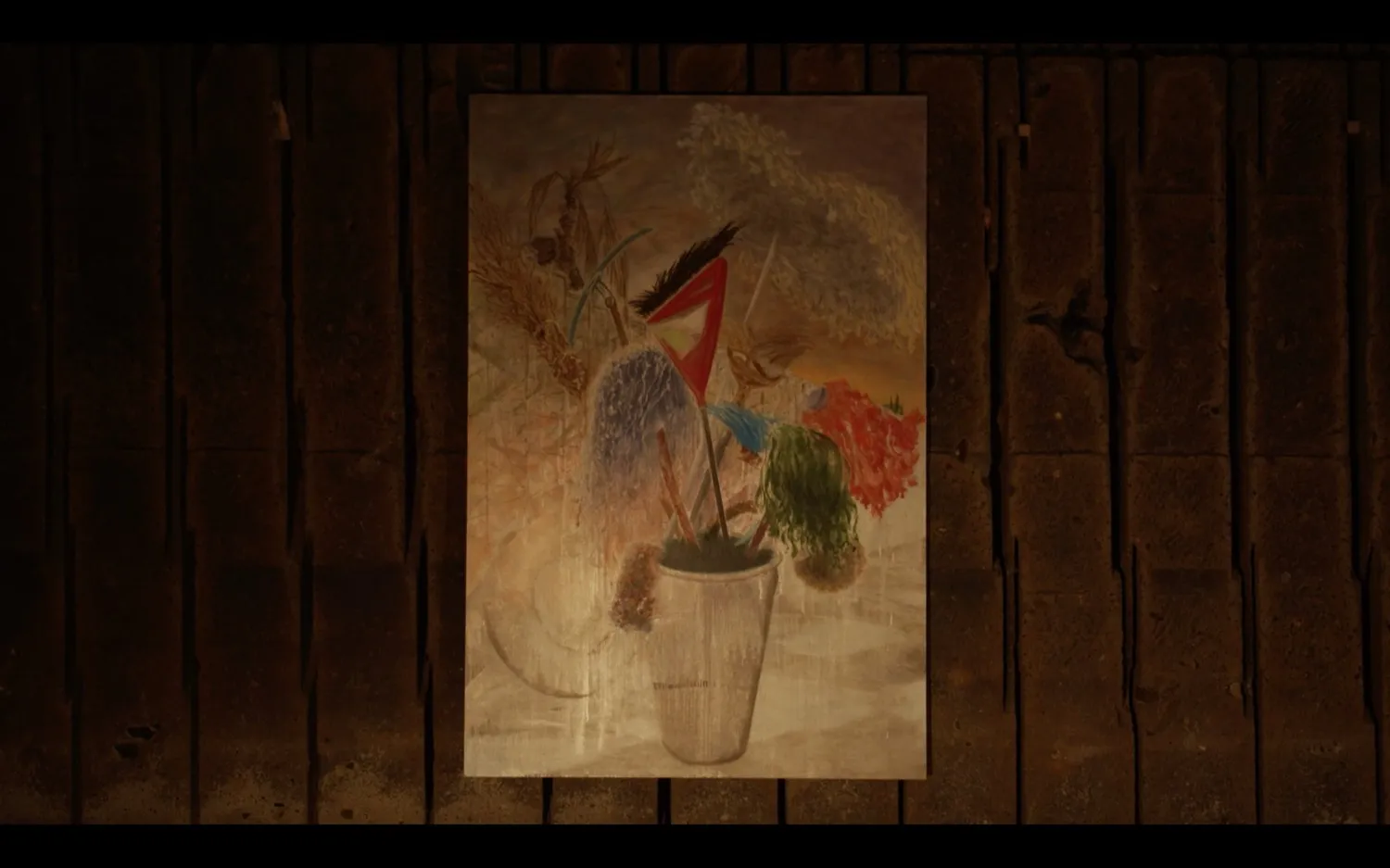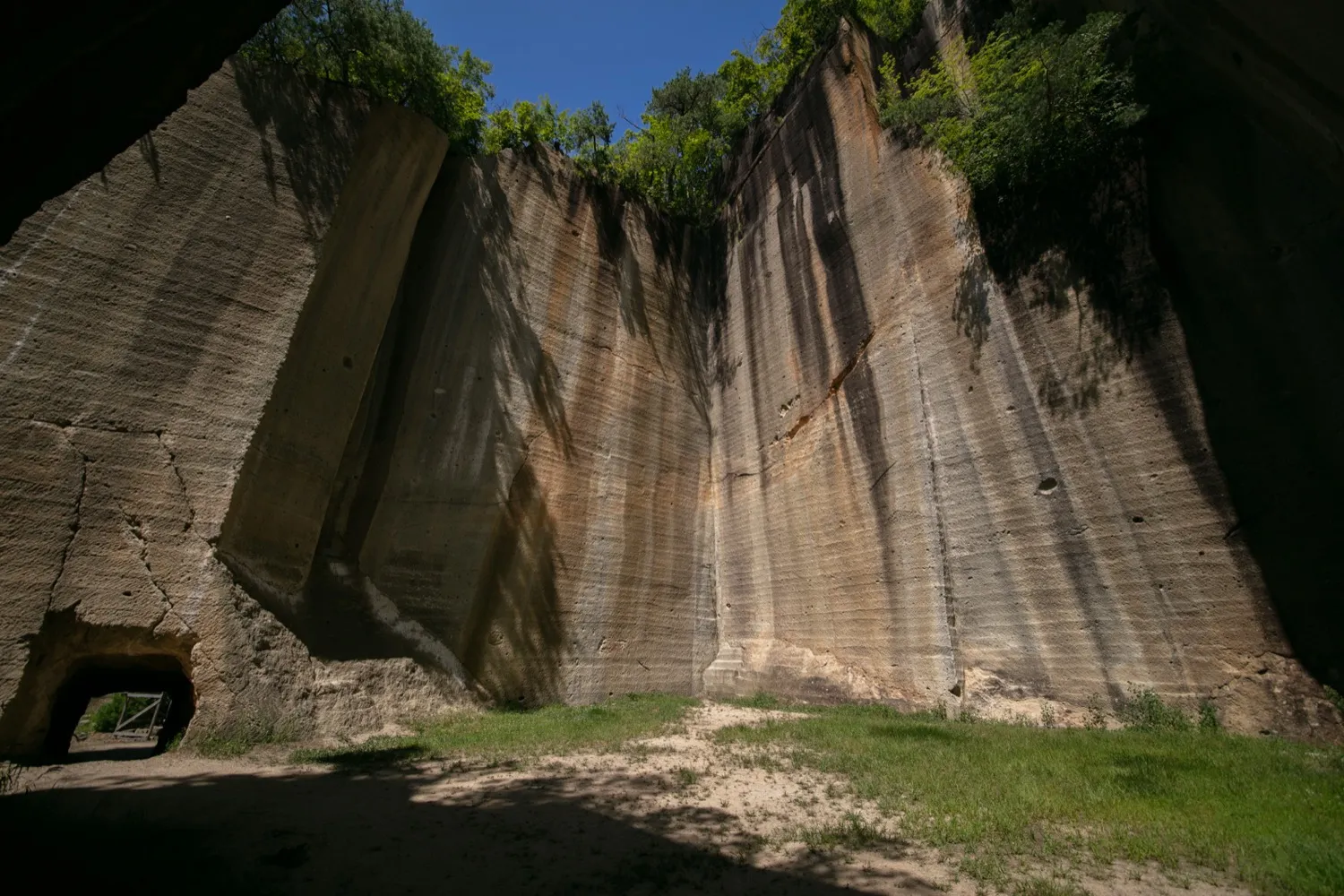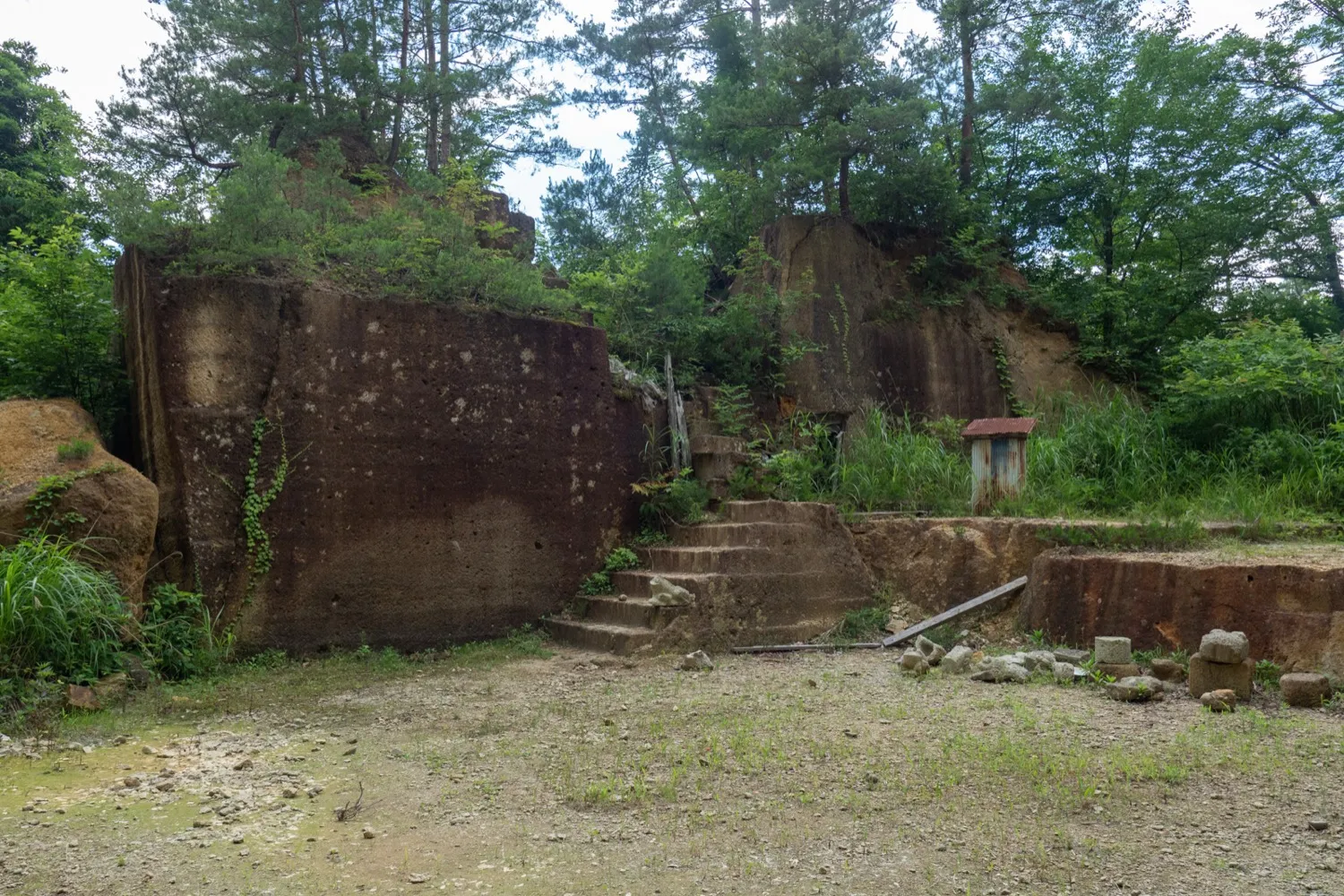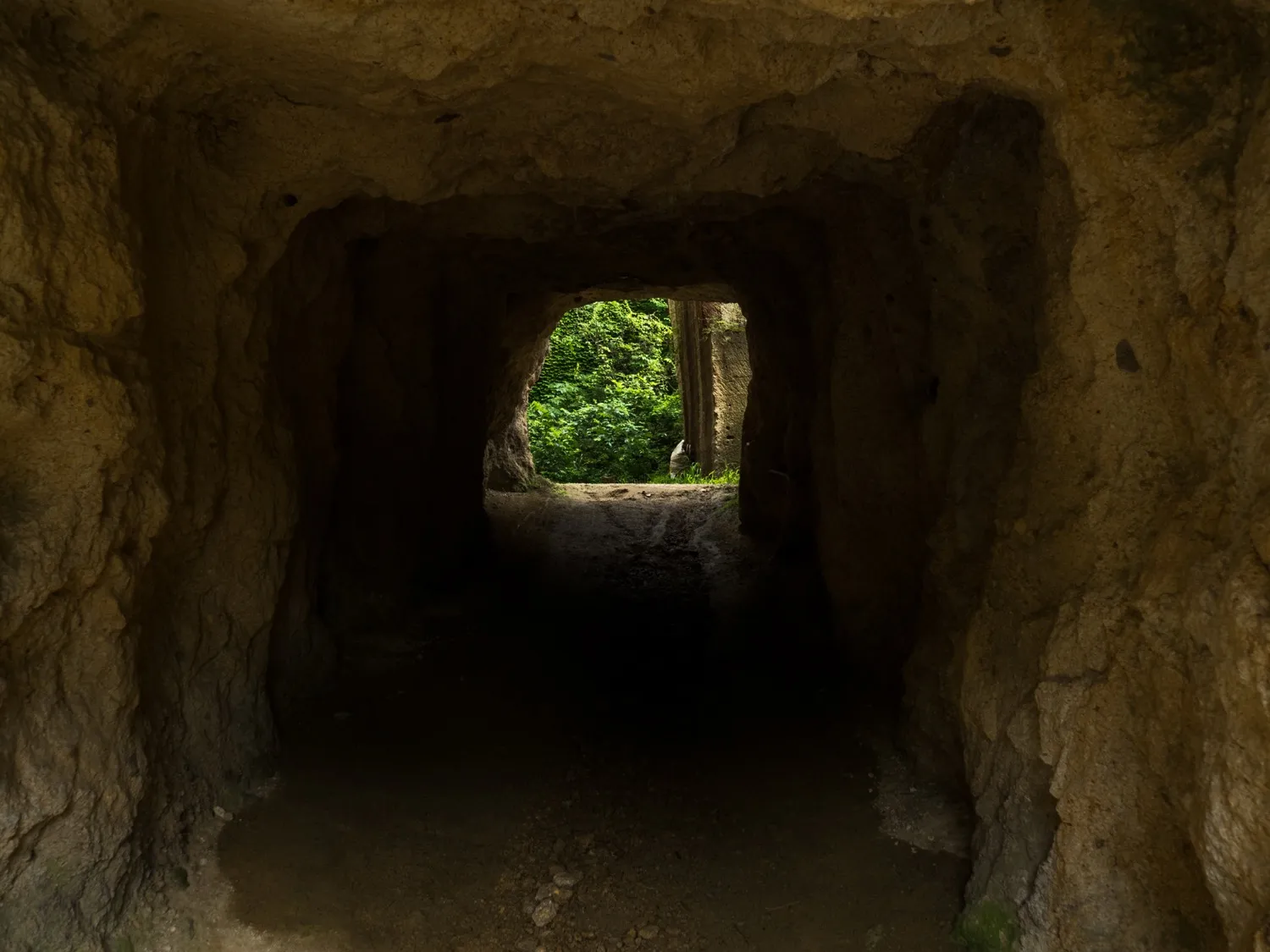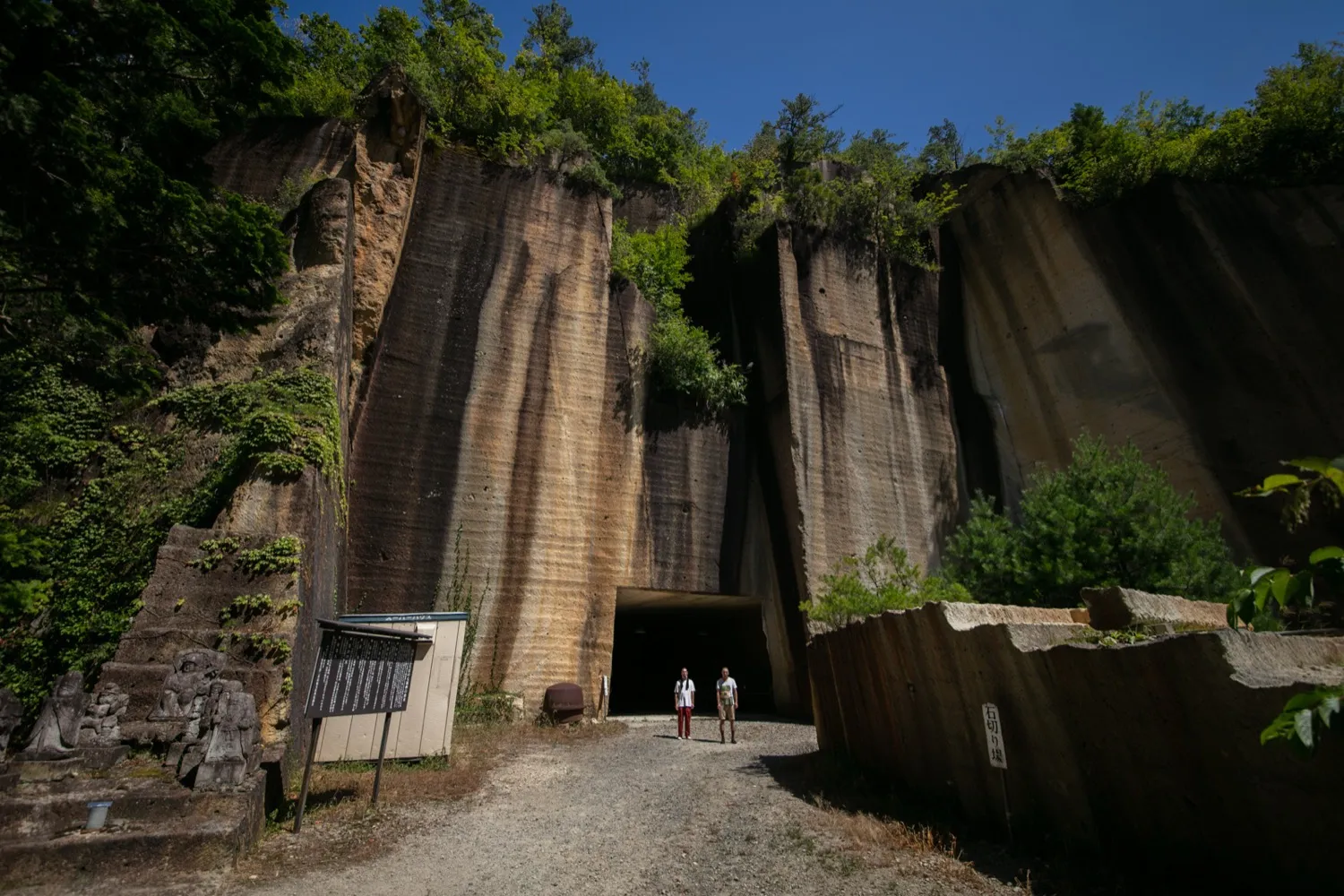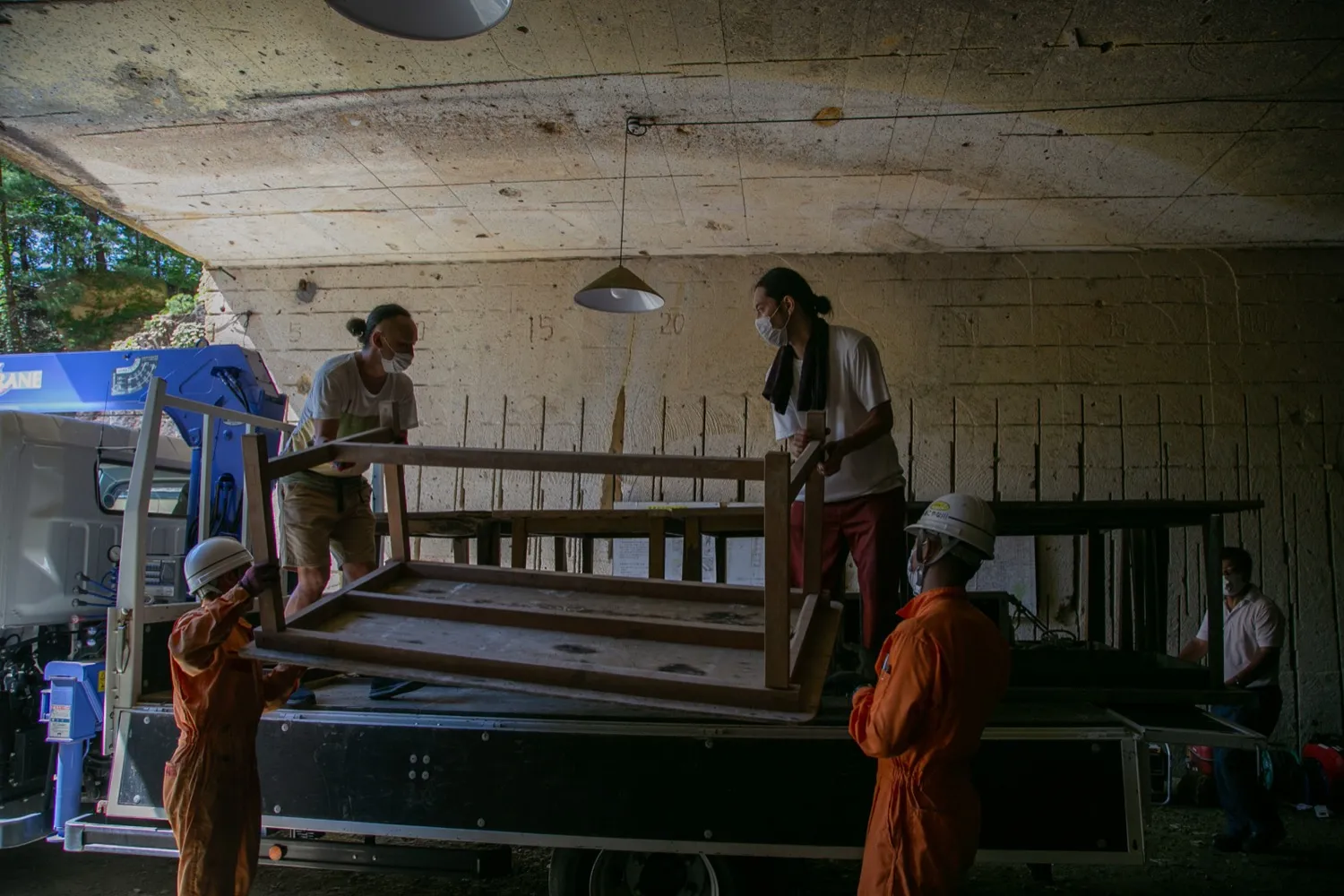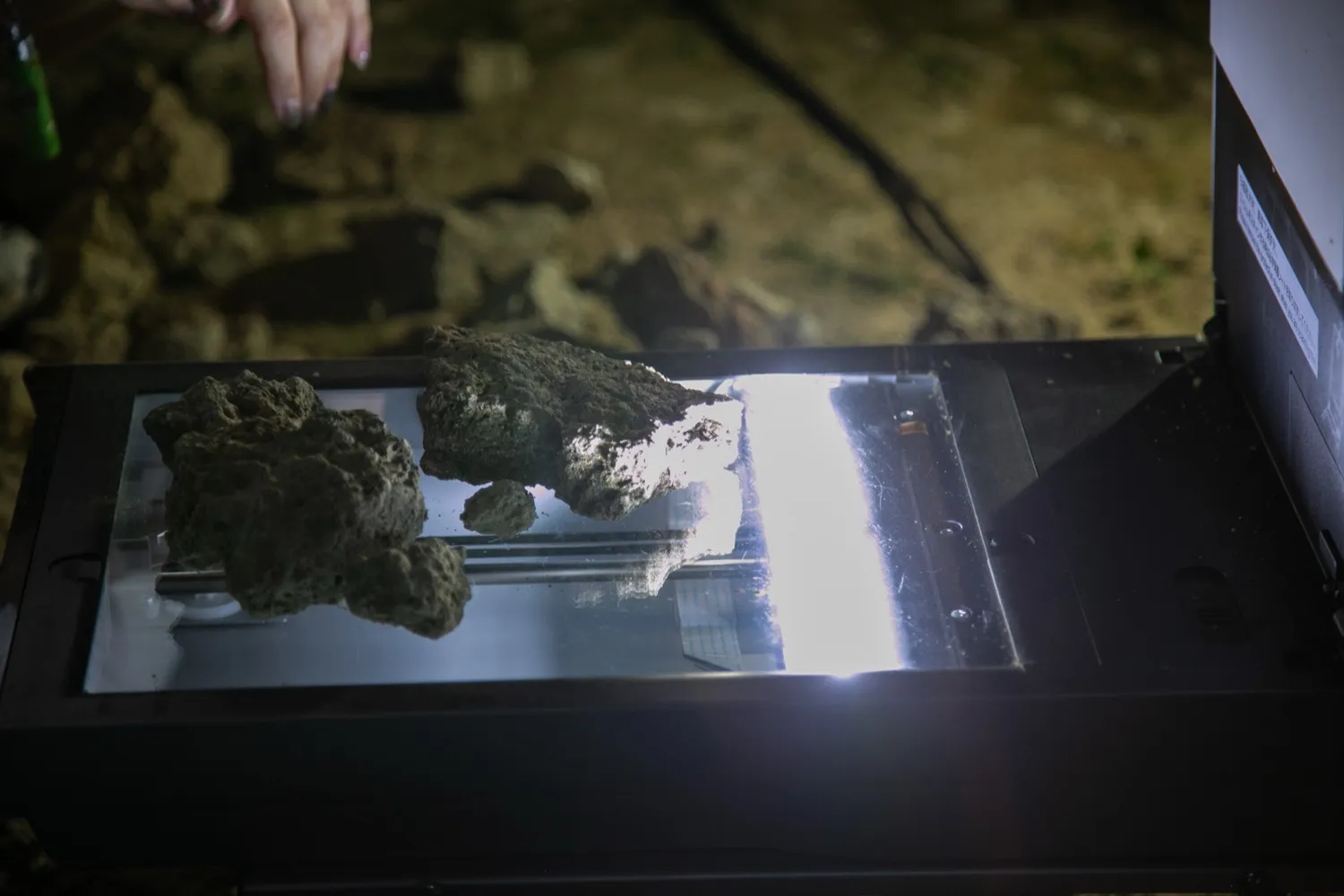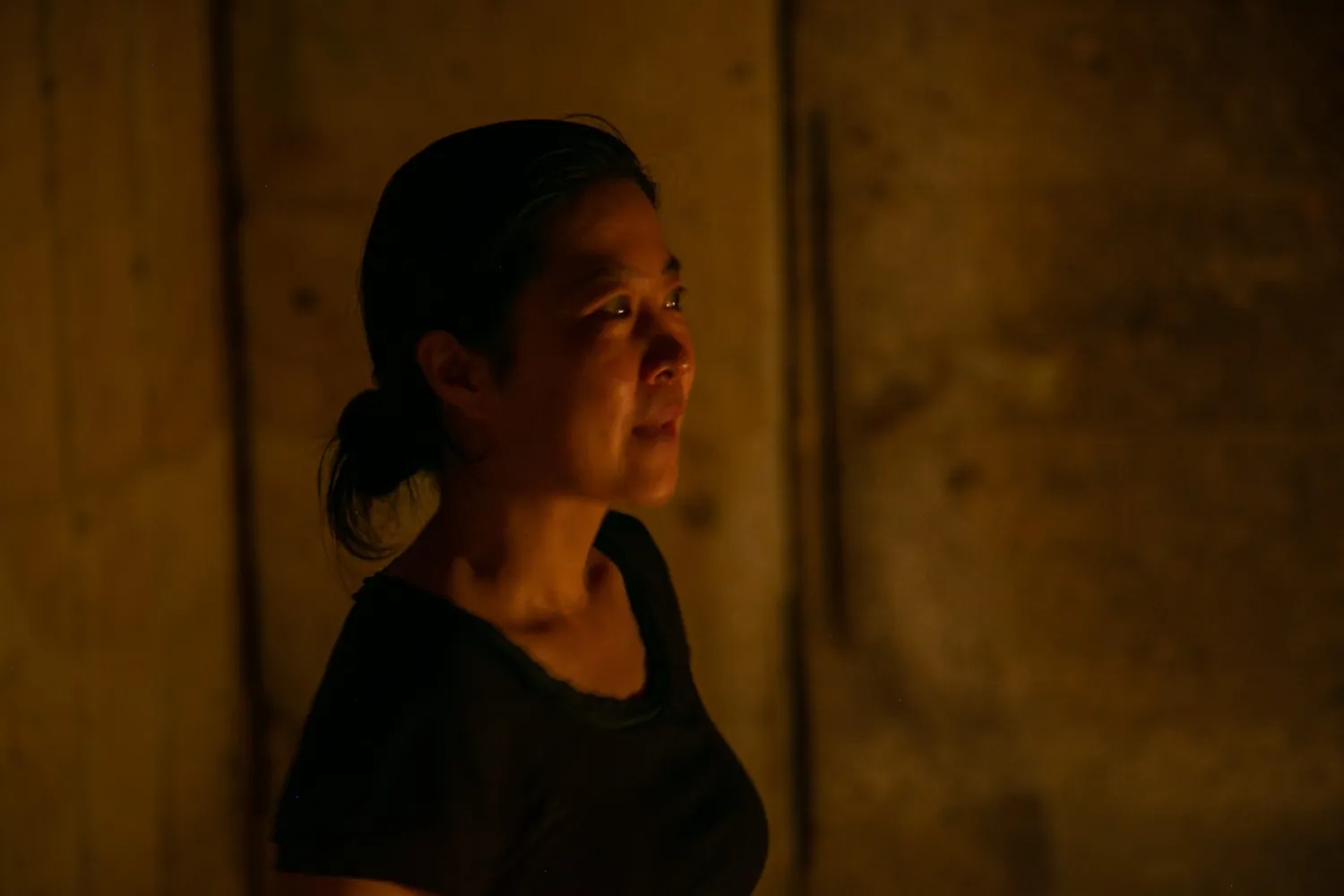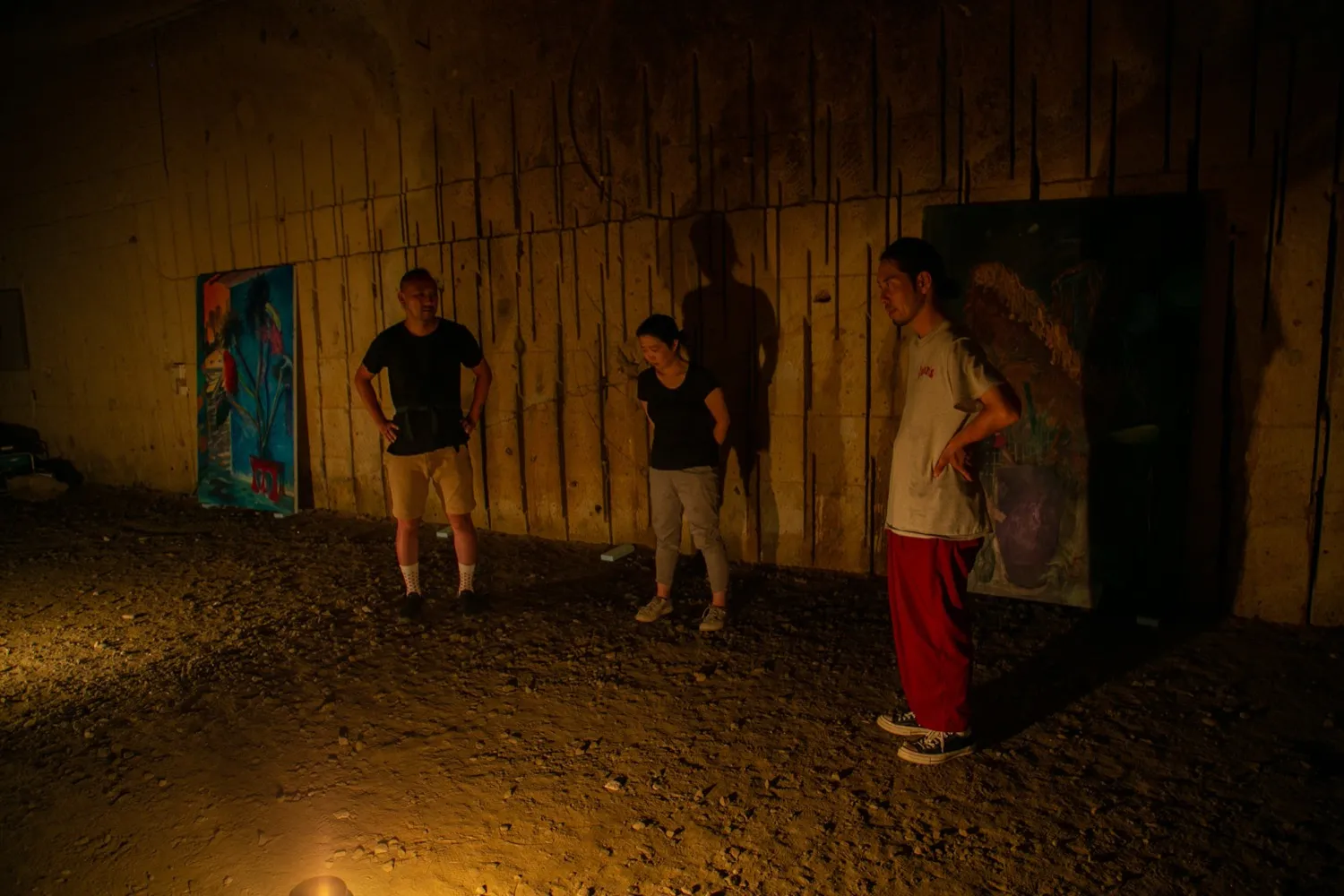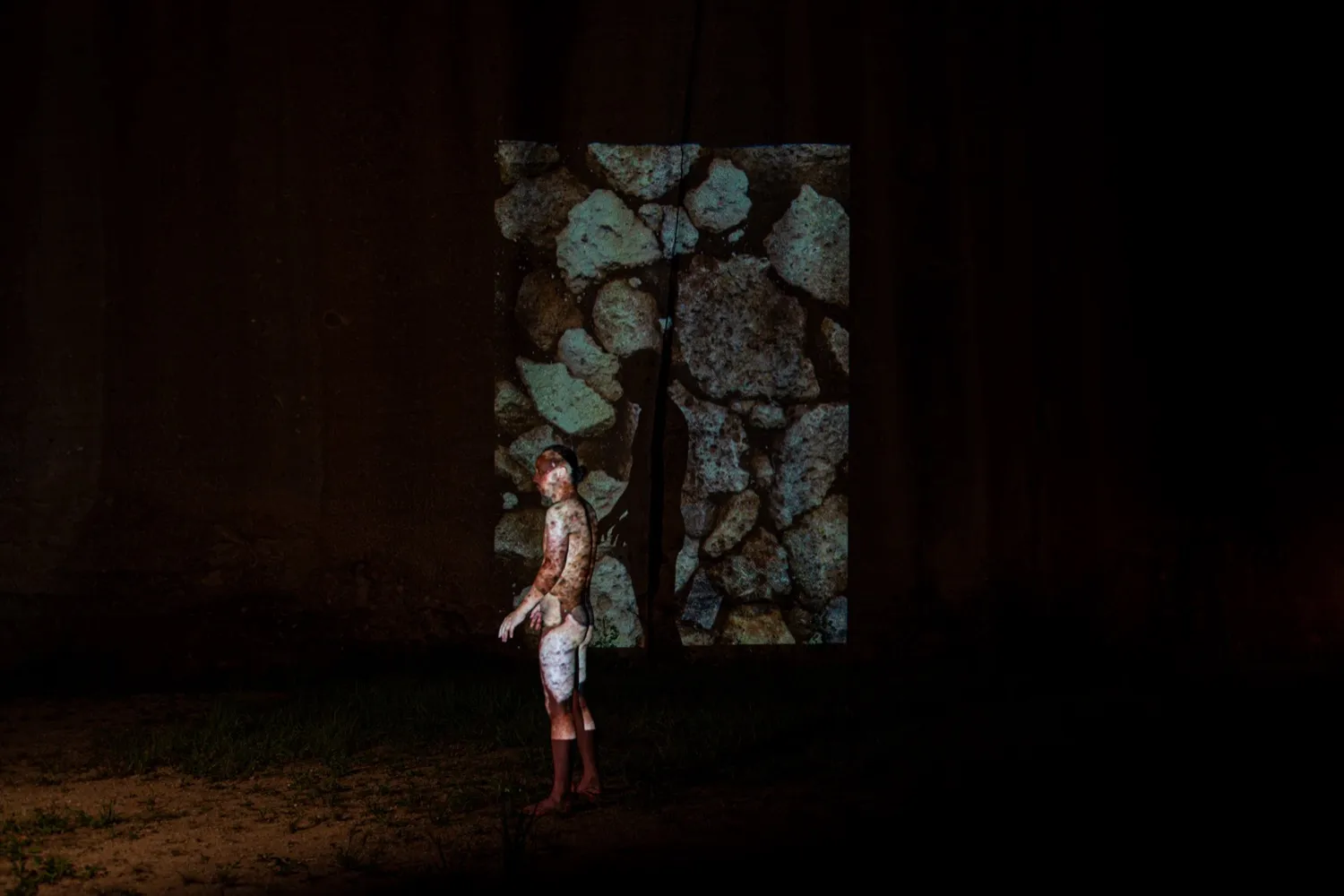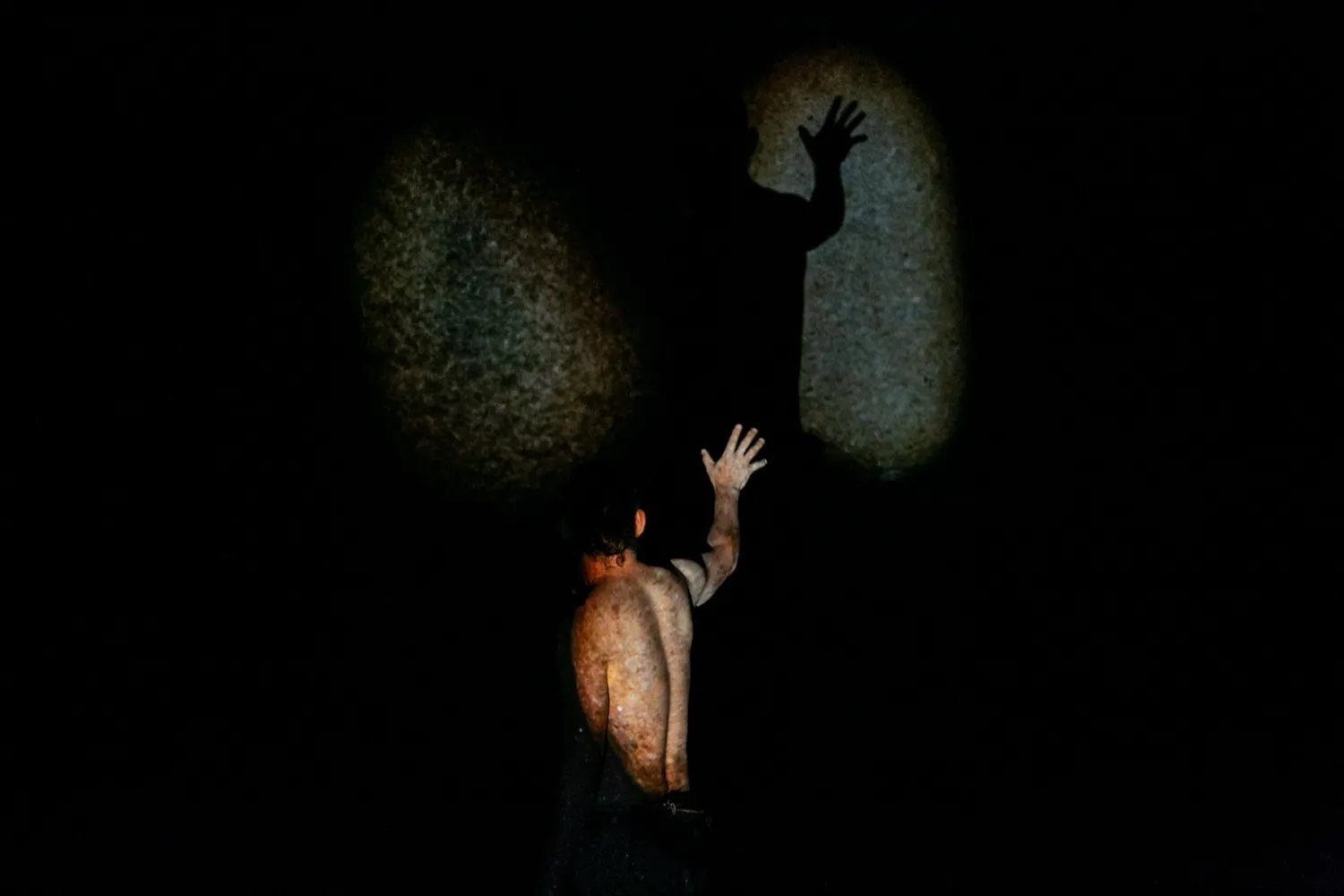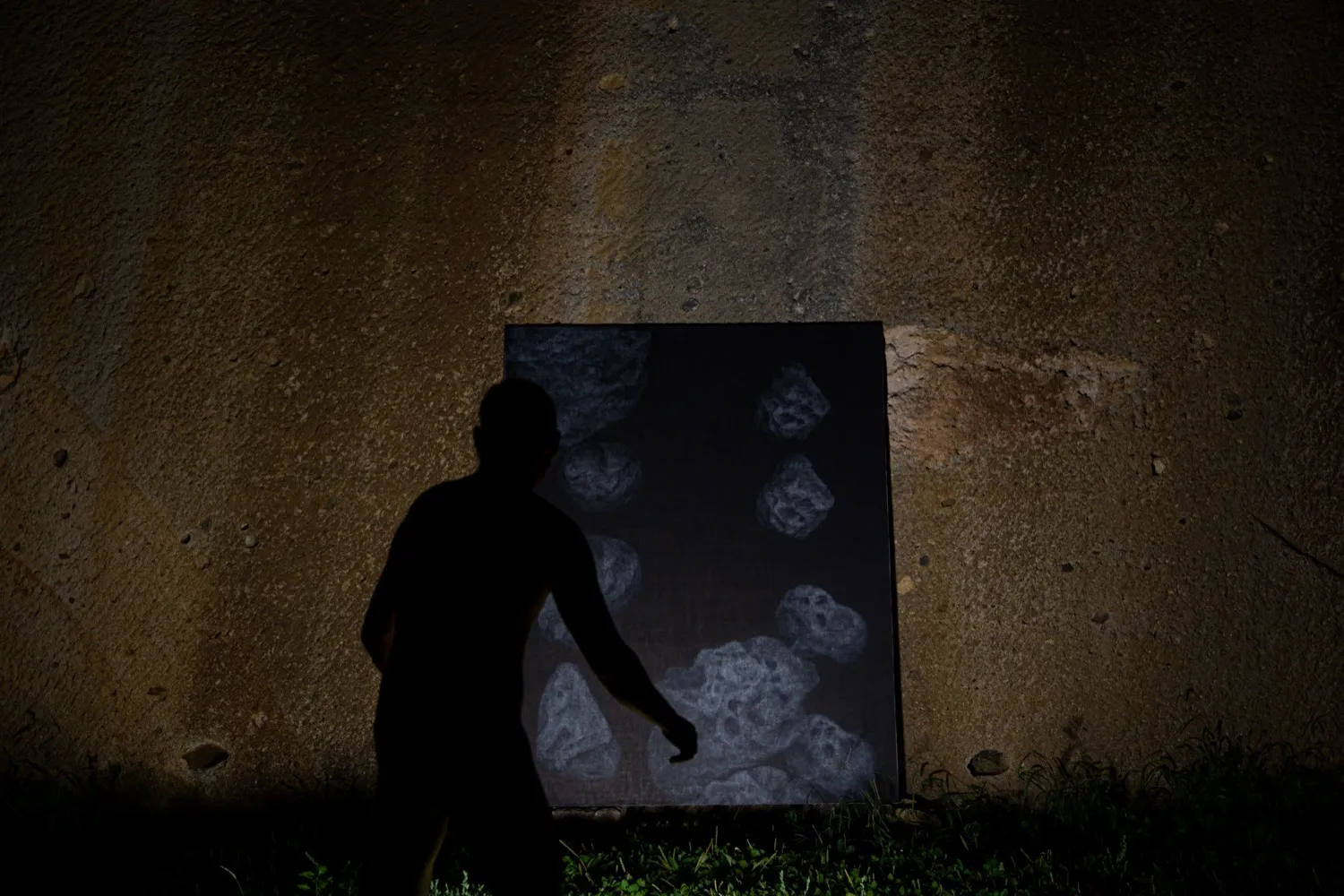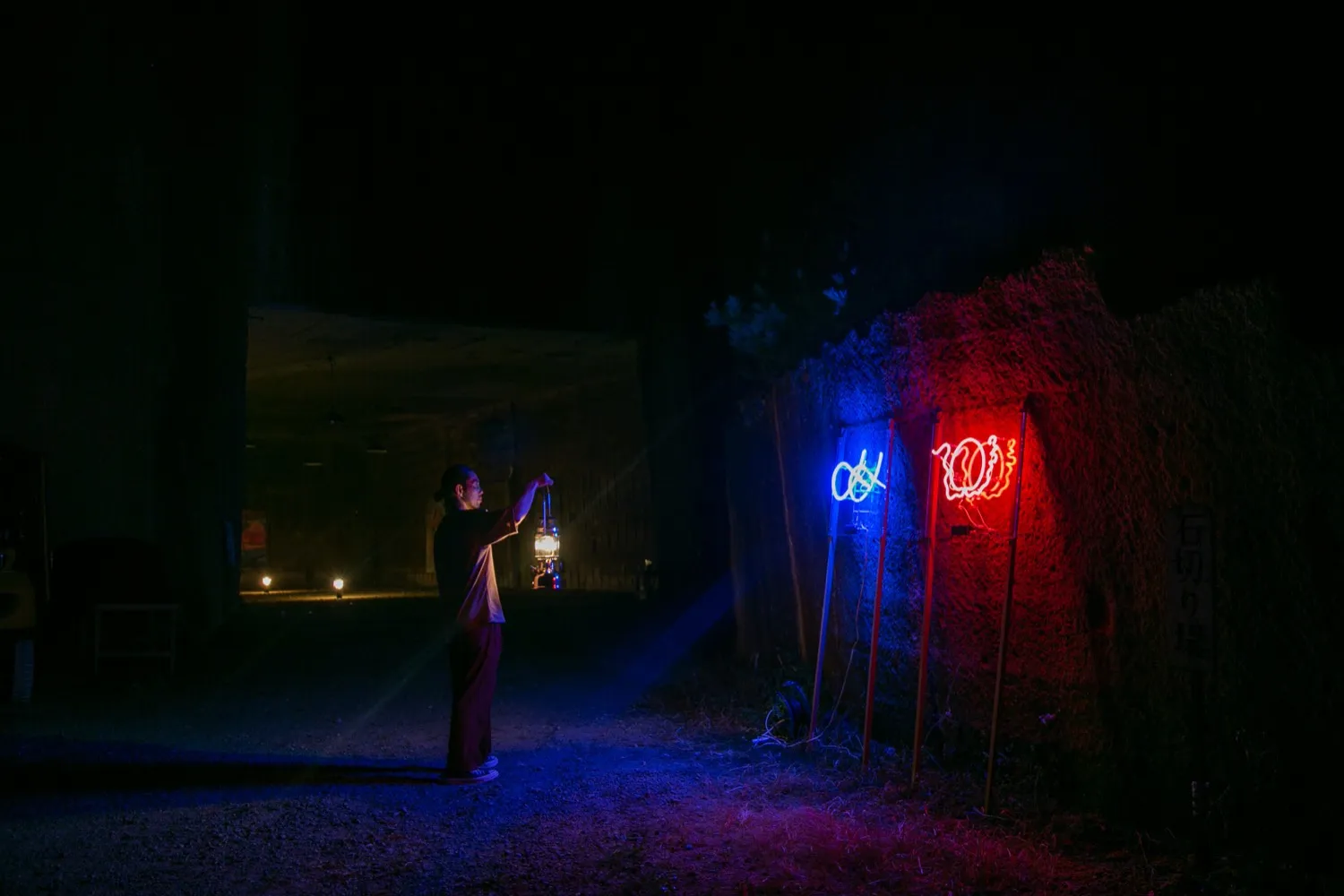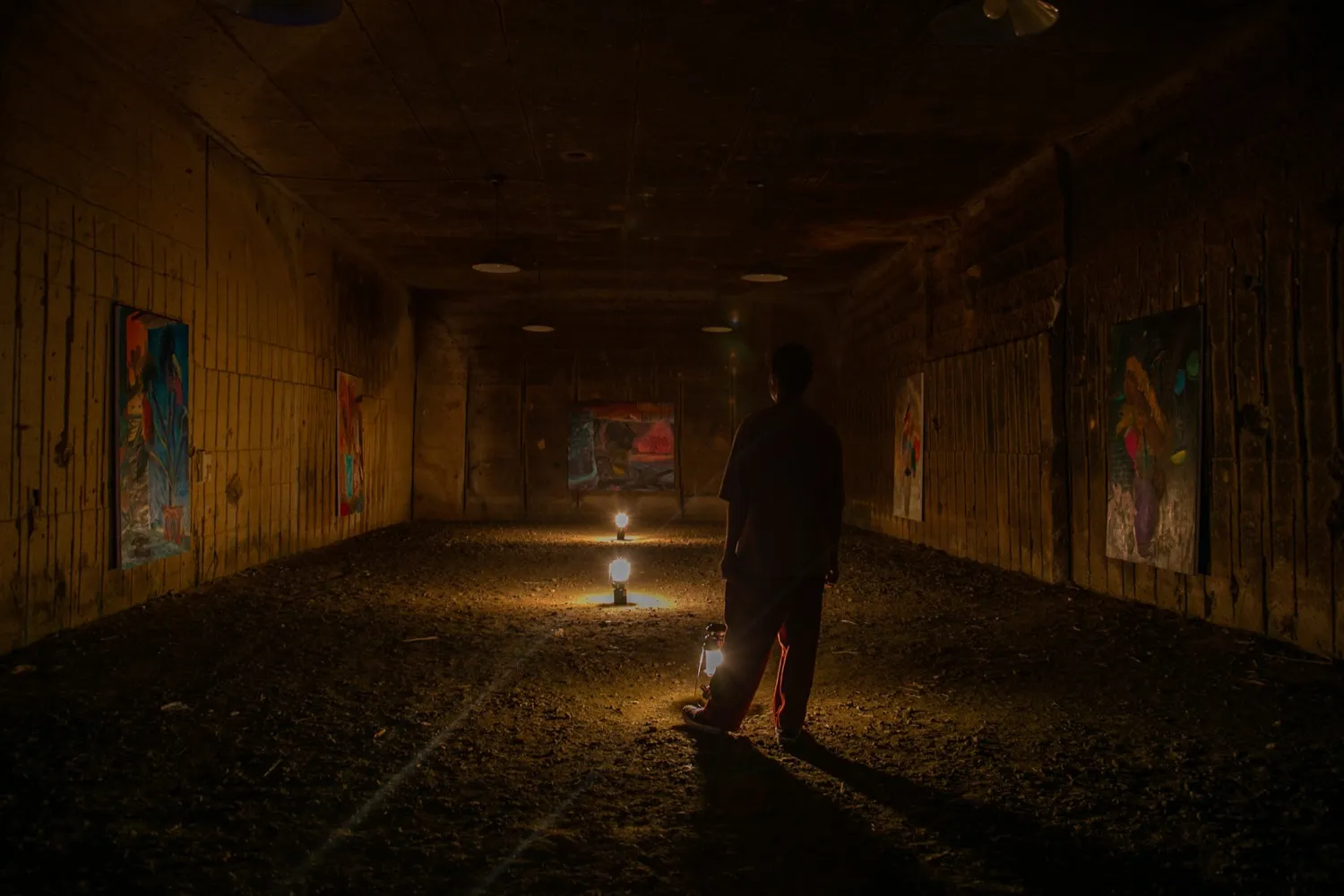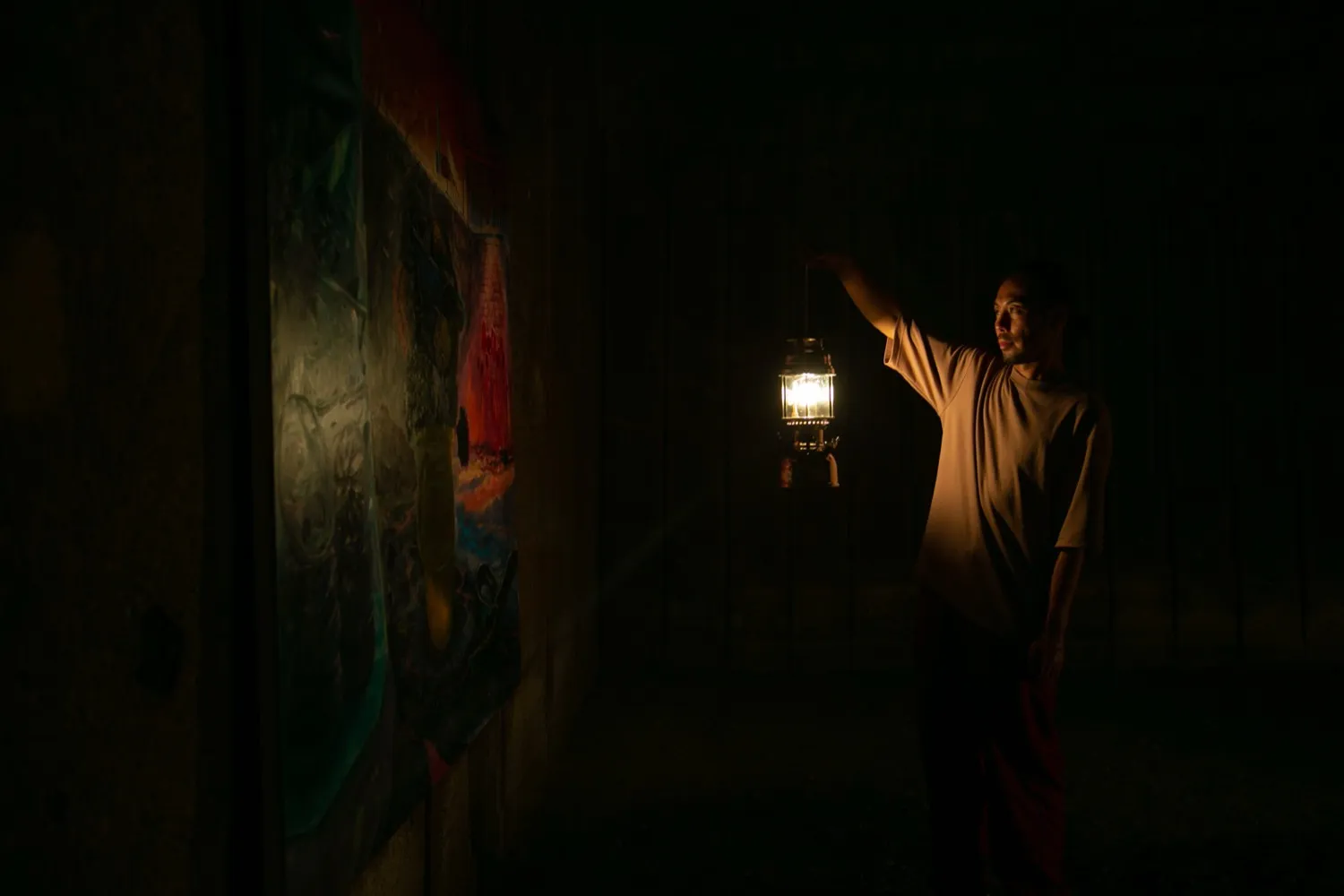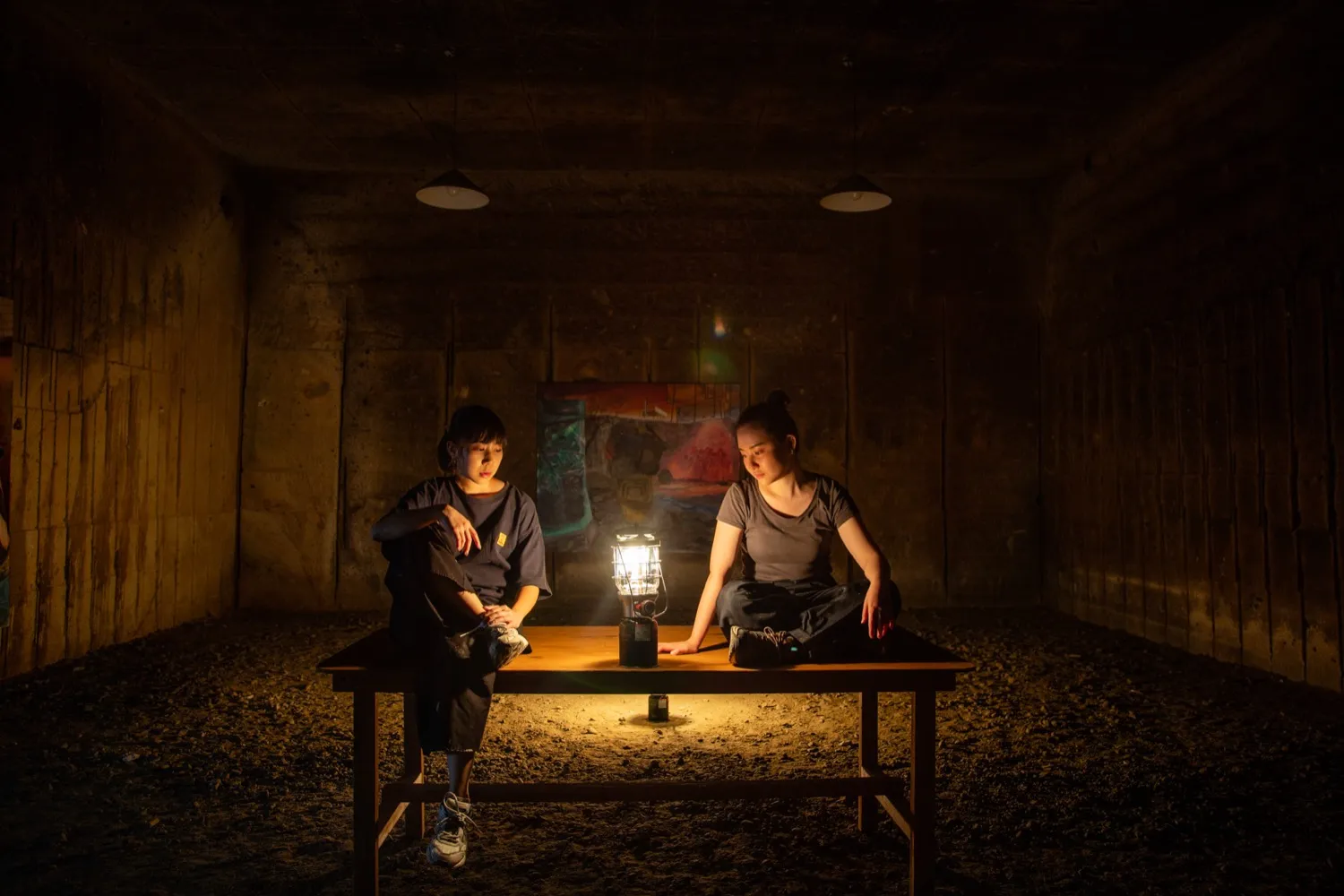"Alpha Omega." This title had been on my mind for quite some time. It comes from the Book of Revelation in the New Testament, meaning "the beginning and the end," and no other phrase resonates more deeply with my understanding of painting within art. Painting is the beginning and the end of art (as any true art lover would likely agree, I am a painting supremacist). While perhaps a bit dramatic, I reveled in the self-indulgent title, dreaming of someday holding a painting exhibition bearing its name.
I began concretely thinking about the exhibition two summers ago after seeing Fukunaga-kun's work at Satoshi Ohno's studio in Fujiyoshida City. Seeing the painting, which is also featured in this exhibition, somehow clicked. By then, I had already collected several of Ishii-kun's works. Although their styles are quite different, I felt a shared, unique sense of sanctity in both. I simply wanted to see their paintings together in the same space. The time had come. "Alpha Omega."
Initially, I planned to hold it in a typical white cube gallery in Tokyo, following the "conventional art style." With the cooperation of "Hikari Studio" in Kyoto, we even had a neon sign designed by the two artists ready. I was thinking of holding it around May and was about to start preparations when, in the blink of an eye, the novel coronavirus became a pandemic. Following the Lehman shock, the black swan spread its wings once again, and the world changed drastically.
Closed borders, the death of Ken Shimura, daily increasing infection numbers, shocking footage from Europe and America, the postponement of the Olympics, the state of emergency declaration, stay-at-home orders... Stunned by the severity of the situation, I shut myself in at home, spending endless days playing PlayStation.
In early May, under the state of emergency, my wife and I headed to a villa in Nagano, which we happened to acquire from an acquaintance in March, for a change of scenery, carrying a slight sense of guilt for traveling from Tokyo to the countryside. The Dangozaka Service Area, usually bustling with people, was nearly deserted, with most shops closed. The highway was empty, not even transport trucks were running. Witnessing a scene reminiscent of a racing game's tutorial mode, I re-recognized the seriousness of the situation. It was clear that a significant economic downturn was imminent.
Minamiaiki Village in Nagano, where the villa is located, is at a high altitude, with open landscapes, abundant nature, sparse population, and incredibly fresh air. In Tokyo, even going to the local supermarket felt unpleasant due to the invisible fear of the virus, but here, that feeling was completely absent. Immersed in the liberating feeling of the forest for the first time in a while, enjoying BBQs and a tent sauna, my catchphrase became "Cities are over because of Corona." It was around this time that I vaguely started considering the "outdoors."
Meanwhile, the number of new infections began to settle down, and the state of emergency was lifted. I was half-impressed and slightly scared by the Japanese people's ability to reduce numbers so much without legal enforcement. I thought we might aim for zero new cases for several weeks, like Taiwan or Hong Kong, but instead, it seemed we chose "coexistence" along with a "new lifestyle." Could we really coexist with the novel coronavirus? I thought the numbers would probably increase again soon.
Under these circumstances, although it was difficult to tell the two artists, my honest feeling was, "This isn't the time for art." The planned white cube exhibition represented the epitome of close contact; people likely wouldn't come, or rather, I wouldn't want them to. If a cluster were to occur, it would be disastrous. Fundamentally, it felt contrary to public health ethics. After a while, conversely, I started thinking about what an exhibition that rigorously adhered to ethics during this period would look like. Could a "new art style" with zero infection risk, completely avoiding the "Three Cs" (Closed spaces, Crowded places, Close-contact settings), be possible?
The answer I arrived at was "outdoors" and "online." Even if outdoors was viable, I still believe an online exhibition is a far inferior experience to viewing in person, even with VR. Nevertheless, the obsessive focus on ethics and infection control, almost to the point of being sarcastic, seemed novel and interesting. I felt I had finally found a meaning in holding an art exhibition under these circumstances. We decided against any publicity to avoid attracting unexpected visitors, sent DMs just before the event, made the viewing website password-protected and invitation-only, and limited it to two nights only. I began to find a contemporary charm in this excessive consideration.
Uriwari Sekitei Park, the venue, is in Takahata Town, Higashiokitama District, Yamagata Prefecture, where I lived until I moved to Tokyo at eighteen. I had never properly visited the park, only vaguely knowing it was quite popular with city dwellers and that an outdoor music event was held there last year. Searching online, I found that the park, originally a quarry, featured a series of loosely connected yet distinct spaces, including plazas surrounded by high cliffs and artificial caves. It seemed perfectly sized for an outdoor art exhibition. The presence of the caves, reminiscent of grottos, was significant. Without citing Bataille's "Lascaux," caves, sanctity, and painting are contextually inseparable. Amidst the pandemic, painting returns to its origins. It was truly "Alpha Omega."
After getting the artists' approval, I immediately consulted my father, who thought it would probably be usable. With the cooperation of the town office, we were granted permission. However, the project was presented as a "filming" rather than an exhibition. I wonder what would have happened if we had submitted it as an exhibition expecting general visitors, though that wasn't our intention. The aforementioned outdoor music event was canceled this year. Incidentally, museums in Tokyo were already open at that time under the "conventional art style" with few restrictions. I don't intend to judge either way, but that was the reality.
Entering July, as expected, infection numbers started rising again, increasing tensions. Despite this, the three of us calmly proceeded with site visits and preparations. It was decided that Fukunaga-kun would arrange his paintings on the cave walls, and Ishii-kun would project videos onto the rock faces along the path and the cliffs at the back. During preparations, due to my mother's frail health, I was subjected to a minor quarantine at my parents' house, using only the large room, toilet, and outdoor bath, at their request. While feeling bad for the artists, I, understanding the rural realities and ways of thinking firsthand, felt the troublesomeness of the coronavirus deeply and strengthened my resolve for the "new art style."
On August 27th, heading towards the main event, Ishii-kun, Fukunaga-kun, Usami-san, and I drove to Yamagata in a two-ton truck and a station wagon. Later, Katayama-san and Tezuka-san arrived, followed by Miyake-san. To prevent spreading infection from Tokyo to the region at all costs, the artists and staff lived in tents – another thorough implementation of the "new art style." During the period, Yamagata experienced an unusually intense heatwave for late August. Despite some people feeling unwell, we proceeded with the setup, aided by employees from my father's company, and somehow managed to reach the opening day.
The outdoor art exhibition "Alpha Omega" was realized under the guise of filming, but since we hadn't invited anyone, naturally, no one came. Only the artists, staff, and a few guests were present. Amidst the darkness filled with the roar of generators, I filmed with a BMPCC4K, while Usami-san took stills with a Canon SLR. Viewing these should give a good sense of the exhibition space. The display created by the two artists was magnificent. Ishii-kun's literally physical performance was soul-stirring, and Fukunaga-kun's paintings, illuminated by lanterns on the cave's stone walls, exuded a different kind of allure and sublimity than ever before. Their presence at the venue somehow resembled that of clergy.
On the other hand, it's true that an exhibition prepared with such effort and care, yet lacking an audience, felt somewhat empty and strange. It would be a lie to say I didn't wish more people could have seen it in person. But still, this was the fruit grasped after resisting reality. It had meaning precisely because it was done this way, now. It's certain that this exhibition was born from this era and these circumstances. As the organizer, I am proud to have presented a form of the "new art style."
At the end of August 2020, if the COVID-19 pandemic hadn't occurred, Japanese people would likely have continued their usual lifestyles, returning to daily life while basking in the afterglow of the Olympics, and "Alpha Omega" would have been held uneventfully in some white cube gallery. Realizing an exhibition fitting to mourn the lost worldlines, like a funeral rite for the past and future that never arrived, witnessing it firsthand, recording the footage, and being able to present it as an online archive now feels like an unparalleled blessing. Though it cost considerable money, time, and effort.
Organizer: Daisuke Akiba
